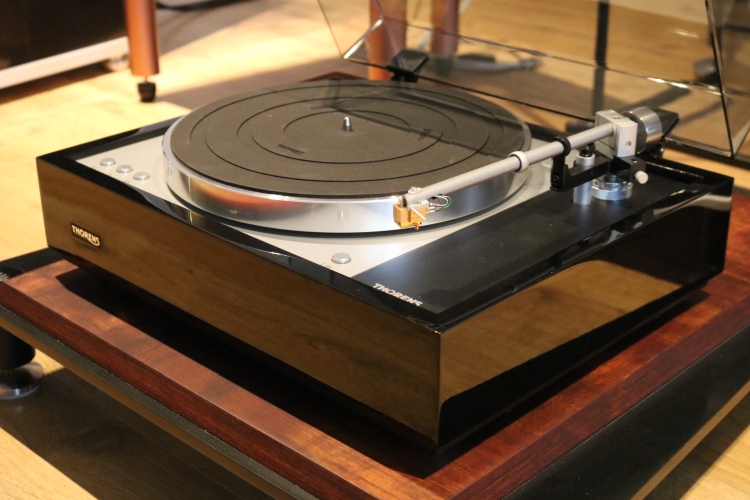
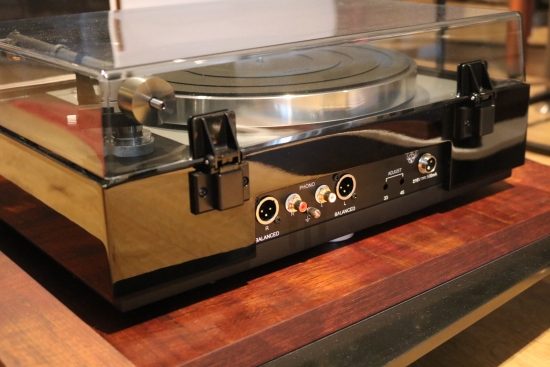
The newly developed TP-92 arm looks absolutely fantastic. It has a distinct TP-16/TP-62 look but feels much more solid. At 11 grams, it also has a medium effective mass which allows a much wider range of cartridges to work with, even those with higher compliance.
The turntable offers cinch as well as XLR connections, the latter allowing for a true balanced signal to be used with phono preamps that are so equipped. For example, the Jeff Rowland Cadence and the CH Precision P1, offer this functionality. As all phono cartridges are inherently balanced internally this should make for the best way to transfer the music signal. Alas, I did not get around to testing this but if I do get the opportunity later, I will add my experiences to this review.
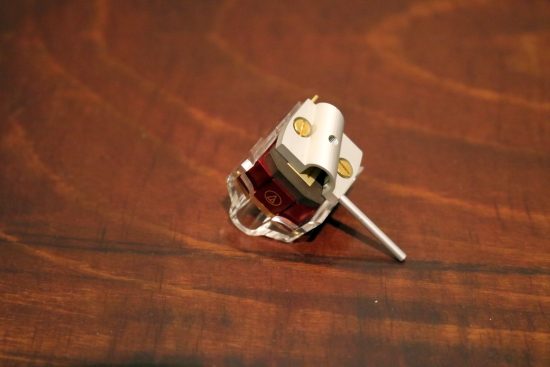
The regulated power supply is housed in an external box and connects via a sturdy and lockable connector to the turntable. Combined with the cinch, XLR, and earth connections, this makes for a turntable that can be freed entirely from its cables which greatly aids cartridge mounting. This is more important now than before because the new TP-92 arm no longer has a detachable headshell or arm pipe. The small piece of aluminum that also holds the cue lever functions as a minuscule headshell that can be detached with a single screw. The beauty of this design is that the cartridge is basically mounted directly on the arm pipe which avoids the loss of energy.
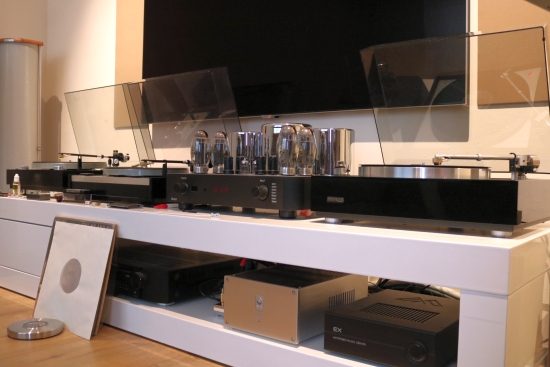
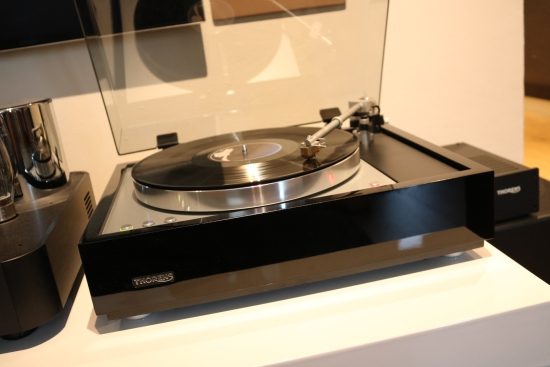
Listening
The TD1601 came complete with an Audio Technica AT33EV cartridge which was fortunate because I have prior experience with it using it in the Yamaha PX-2 turntable. At that time I already felt that it was a very fine-sounding cartridge but now I feel that the TD1601 extracts more from it than I heard back then.
There is a definite family resemblance: the TD1601 sure sounds very much like a Thorens. It has all that made me fall in love with the classics and further enhances pretty much every aspect of the sound without tipping over into a clinical or over-controlled delivery.
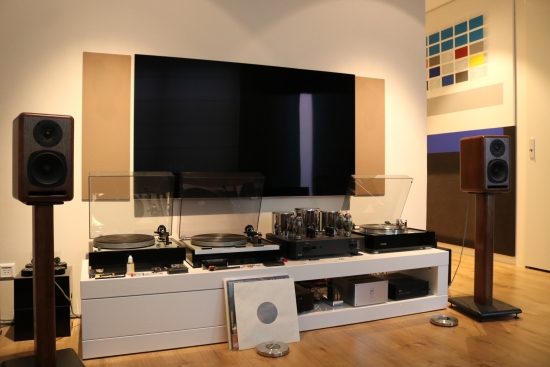
Mated initially with the Benz Lukaschek PP1, the Thorens TD1601 sounds fast, dynamic and upbeat, in line with the typical Thorens delivery. Where it truly excels is in the solidity and impact of the bass as well as in its super-energetic and dynamic delivery. It has a mega-foot-tapping delivery combined with a communicative midrange and fluid, open and airy treble. In fact, such is its rhythmic capability that it makes the TD160 Super sound comparatively thick, ill-defined, and congested. But the TD1601 is a Thorens and that means that it does not only have fast transients, it also has good sustain and decay. Despite its highly energetic delivery, it does not have the clinical and emotionally distant presentation that some extremely highly detailed and hyper-articulate players can possess.
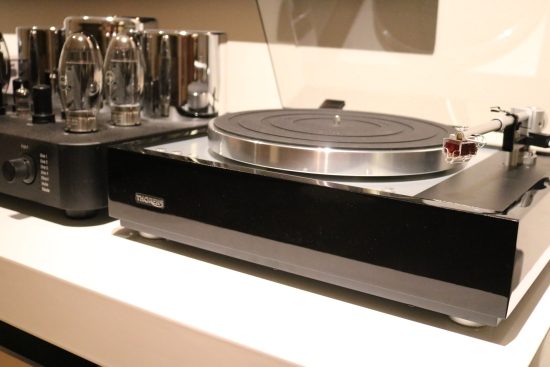
The TD125MkII already demonstrated that the TD160MkII could be improved upon with better separation of instruments and a higher degree of nuance combined with a deeper, more spacious soundstage. But even the TD125 can’t begin to compete – compared with the TD1601 it sounds restrained and lacking in fullness and body. Don’t get me wrong – I still very much like the TD125 and with its comparatively sweet midrange it can also sound quite romantic. The TD1601 is not quite as romantic but instead, it is much more realistic, both in timbre and in dynamics. Oh, those dynamics! This really has got to be the most impressively lively player that I’ve heard so far. Its delivery is so bouncy that you just cannot sit still and I have to suppress the urge to start dancing. And I don’t even like dancing, so go figure!
The bass really is something else. Far removed from the best that I have been able to squeeze from the TP-92 + TP-16MkI or MkII on any deck and in any configuration, the TD1601 + TP-92 bass must be close to what a good Direct Drive turntable can do, it really is that solid and tight.
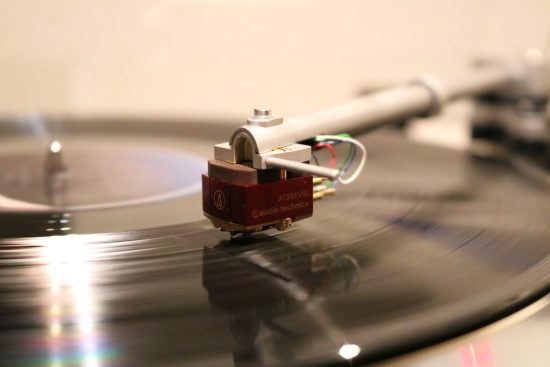
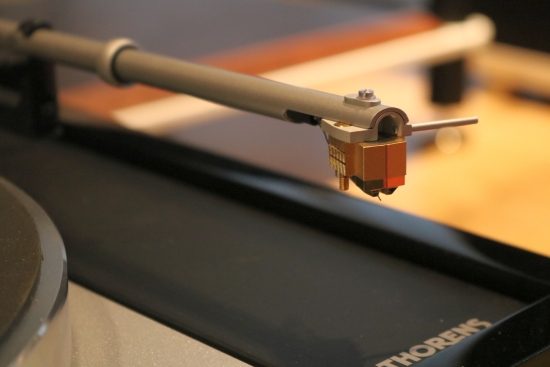
As I was slightly fearful that the AT33EV made a special synergistic match with the TD1601, I also did some cartridge-swapping. At hand, I had three Denon DL304’s which allowed me to compare a TD160 Super, a TD125MkII and the TD1601 side by side with the same cartridge. Naturally, I made sure to compare the cartridges beforehand to confirm that they perform the same. Fortunately, the turntable sounds just as great with the Denon as with the Audio Technica. Phew! Yes, there are differences in the overall balance, the Denons tilting to a more open treble and a leaner bass and the Audio Technica tilting more to a darker sound with more robust bass. Between the two, I felt that the Audio Technica sounded the most realistic and most impressive. While subjectively darker than the Denon at first, longer listening confirmed that the treble is not shut-in or capped and even subtle hi-hat sounds are portrayed with the right amount of air. Rather, it seems more likely that the DL-304 has some excessive treble energy and the AT33EV is actually more neutral. Incidentally, I also tried the AT33EV with both classic Thorens turntables and was very happy to find that it works very well in the lightweight TP-62 + TP-16MkII arms. Not only does it track well (although maybe not quite as well as the Denon), the bass is also substantially fuller than with the DL304. That is good news for all classic Thorens owners because the 304 these days is unobtainium.
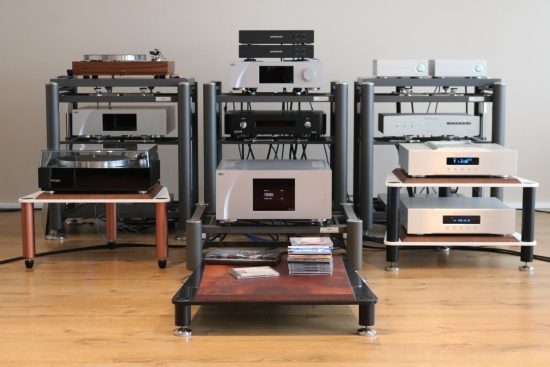
More Listening
After the success in the secondary system where I usually listen to the classic Thorens players, I moved the TD1601 to the main system where it was placed on top of an Artesania Exoteryc rack and connected to the CH Precision P1 phono stage. As speakers, I used both Kroma Audio Carmens and Martin Logan ESL15A‘s, each powered with the CH Precision A1.5 power amp. And, again, the TD1601 + AT33EV surprised me with its excellent performance. In this superlative system context, too, the Thorens is highly expressive and super-dynamic with tight, solid bass. At this point, it dawned on me that not only did the TD1601 have much better bass than any of the classic Thorens turntables, it actually approached the solidity of the massive Direct Drive Yamaha PX-2! I already noticed that the Thorens possessed a very natural timbre in the other setup but with the Martin Logans, this was further confirmed.
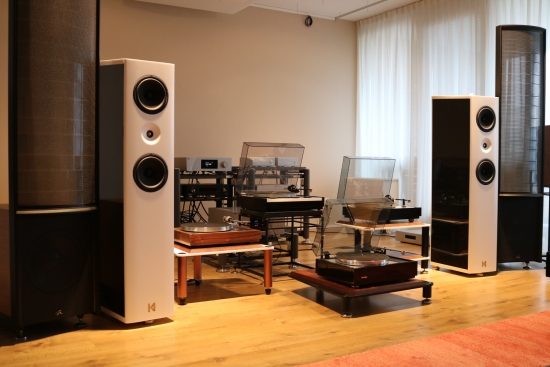
Linn LP12, Thorens TD-125MkII, Thorens TD1601, and Thorens TD160 Super. Not shown but also listened to is the Thorens TD-160MkII and TD-145MkII.
To make matters even more interesting, I also had a Linn LP12 Akurate with an Audio Origami PU7 tonearm (12-gram effective mass version with Cardas 33ga internal wiring and super OFC external cable) available for comparison, loaned to me by Marco Oudheusden of Hexagon Audio as part of another review. As I found out, the Linn can be made to sound very different depending on the chosen arm and cartridge combination. A few years ago, I listened to it with an Akito tonearm and Adikt cartridge. In that comparison, the LP12 sounded rather dry and forward. Now, with the Audio Origami arm and the same Adikt cartridge, it sounds smooth, warm, and relaxed. The loudspeakers were different, but in both cases, I was comparing it to the classic Thorens players as a common reference point and using the same cartridge.
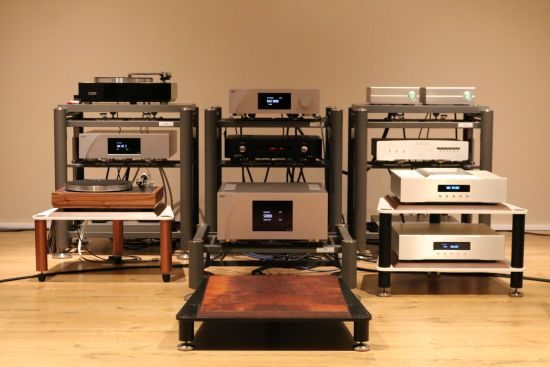
In any event, for the comparison at hand, I now fitted a Denon DL-304 in the LP12 as well as the TD1601 to align them as much as I could. In all cases, the CH Precision P1 provided the pre-pre duties while the phono cables were alternatingly the Linn Silver (as also hard-wired into the LP12) and the Vermouth Reference. As the P1 makes it very easy to make all the adjustments from the comfort of the listening position it was a breeze to find the best settings. At 600 ohms, the Denon DL304 provided the nicest balance between relaxed smoothness and dynamic punch. Lower values made it lose some energy and higher values made it sound too forward in the upper midrange.
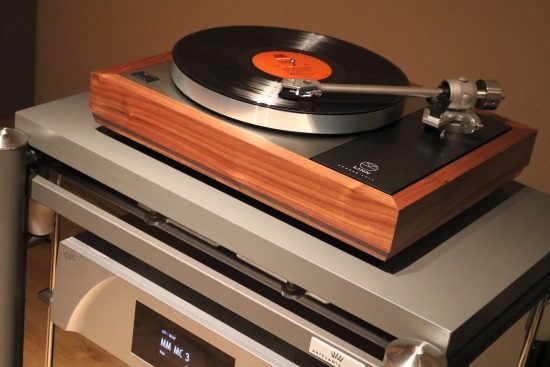
Even when using the Linn Silver interlinks for the Thorens, the TD1601 and the LP12 still could not have been more different. That’s interesting, isn’t it? Both are based on the same working principle which in both cases is executed very well and still they sound very different. Whereas the Linn provides a smooth Limousine-like ride with round, mellow bass, a rich and relaxed midrange, and sweet treble, the Thorens is more like a roller-coaster ride. Yet, its presentation is never edgy or forward or even hard in the slightest. The biggest differences can be found in the bass and the midrange. With Pink Floyd’s Sheep, the Thorens TD1601 portrays the bass player’s part as a very clearly strutted dum du-du-du dum whereas the Linn LP12 makes this into a more generic dum duuuum dum. Other than this and its more restrained expressiveness in the midrange, the Linn does definitely make music. It has soul and it, too, makes my foot tap. But it does not make my heart beat as the Thorens does.
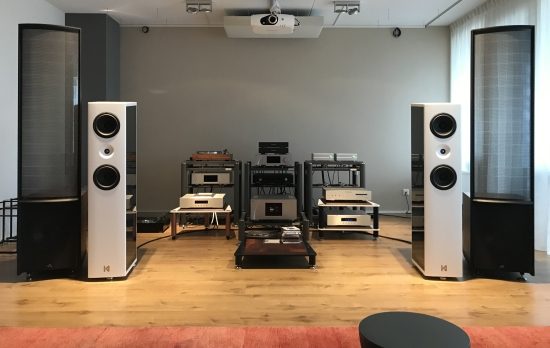
I should note that the Denon cartridge is likely not ideal for the Audio Origami arm as it sounds less spritely and open than it does in any of the Thorens turntables but also with the Adikt cartridge, the LP12 retains its smooth and relaxed nature. And it sounds this way not only when compared to the TD1601 but, to a lesser extent, also the TD160 Super and TD125mkII. I think I should give it a third listen with another arm to see if it can be made to sound in between these two extremes. Fortunately, with the Thorens TD1601, one does not need to worry about such considerations. It works absolutely fabulously with the supplied TP-92 arm.
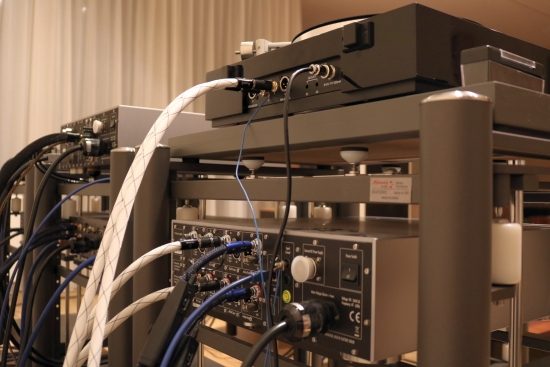
Audio Racks and interlinks
Like all turntables, the Thorens’ sound can be influenced by the rack on which it is placed. On the Artesania Exoteryc rack, where it is placed on a 36mm thick MDF shelf on top of a heavy metal rack, it sounds most neutral, refined, and transparent. On the Artesania Modular Rack, where it is placed on a Tankwood/Krion sandwich platform, it sounds more full-bodied and sonorous and richer in the midrange. Purely in terms of tonality, I think I preferred the latter although with busy mixes the Exoteryc did seem to raise the apparent resolution and provided more clarity and refinement.
The Linn Silver interconnect made for a smoother and sweeter sound than with the Vermouth while retaining the clarity and mostly also the level of detail. The bass, however, is quite noticeably softer and rounder with less “bite” which makes me prefer the Vermouth. However, although less accurate in a technical sense, I can also imagine that this very aspect could be appreciated among people who want a more forgiving sound. In any event, the TD1601 showed its capabilities with either interlink and the selection of the best interlink will prove very much a personal matter. Fortunately, the cinch connections make it possible to just try every regular interlink with it which I think is a great bonus.
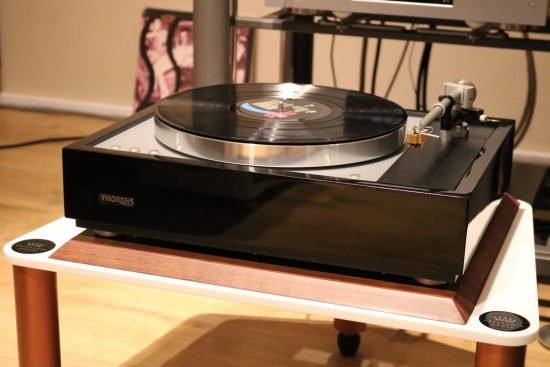
Conclusion
Having changed ownership has clearly worked out well for the Thorens brand. The TD1601 strikes precisely the right balance between classic values and modern engineering. It offers all the benefits of the best classic Thorens turntables along with very high build quality and significantly improved sound at a very sensible price. Visually, it may be based on the TD160 but the TD1601 actually comfortably surpasses even the TD125 MkII. For those who may have had doubts, I say doubt no more! The TD1601 is a true Thorens and I could not be more thrilled that the brand is back. At 3000 euro the TD1601 is already a bargain but a further 500 euro could be saved if one opts for the TD1600 without its motorized lift and auto-shutoff. In either version: highly recommended!

Videos on the Hifi-Advice YouTube Channel
Thorens TD1601 turntable compared to TD160 Super, TD160mkII, TD125mkII, and Linn LP12
HFA Front Page
External Links
Manufacturer: Thorens
Distributor for the Benelux: Lookenlisten
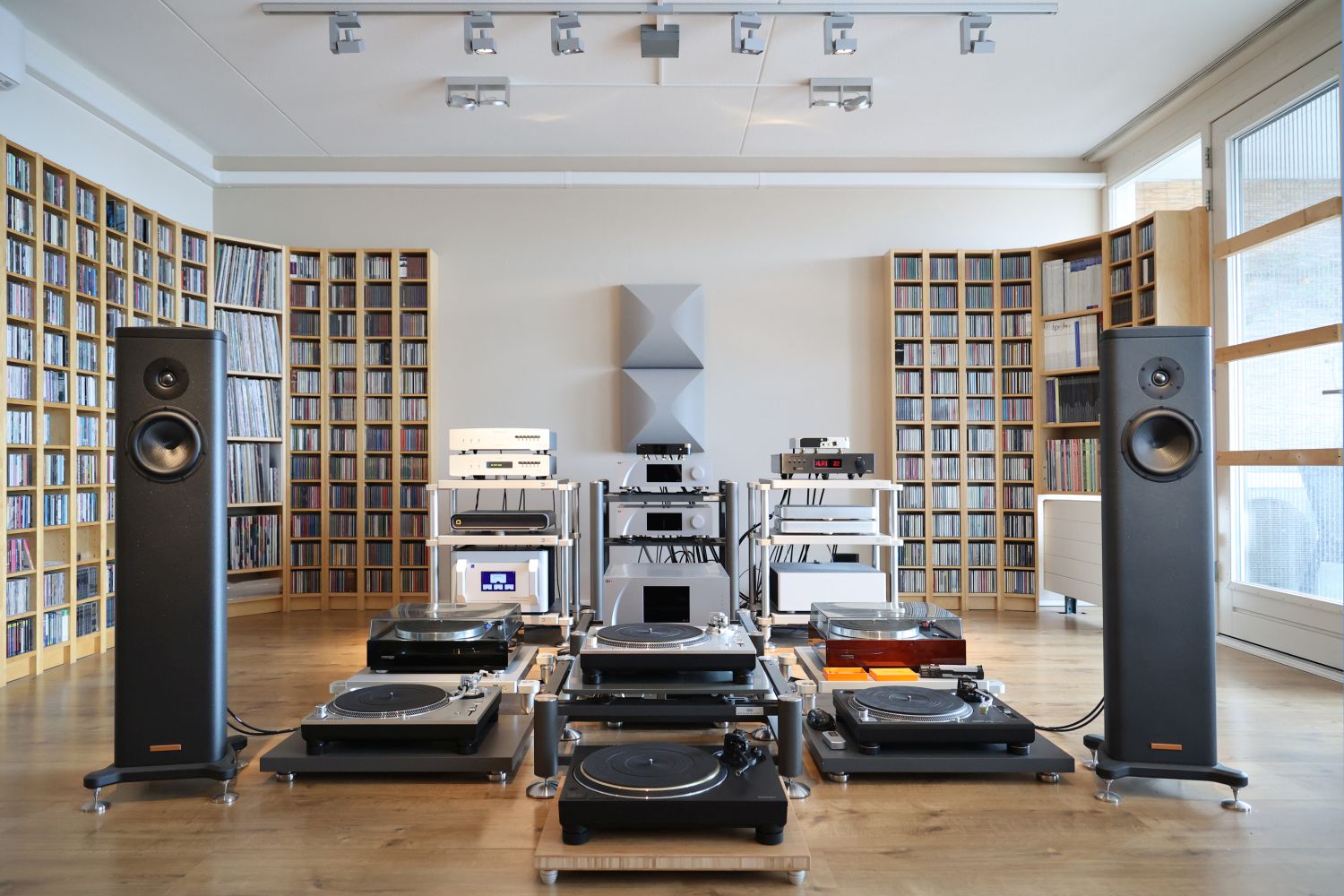
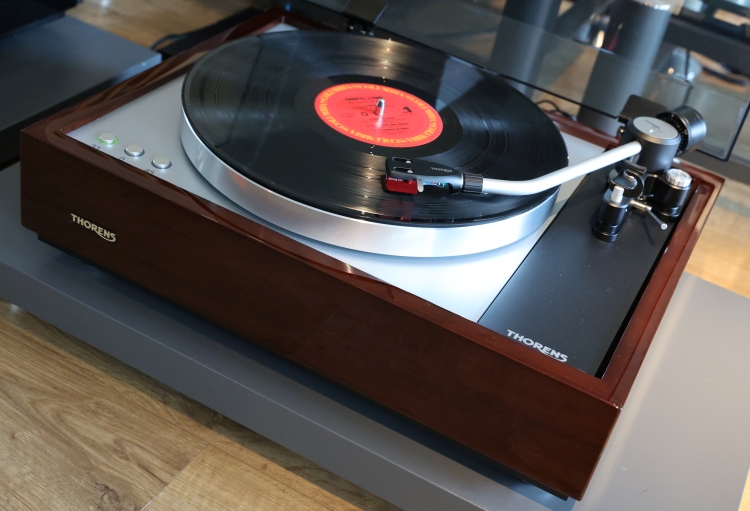
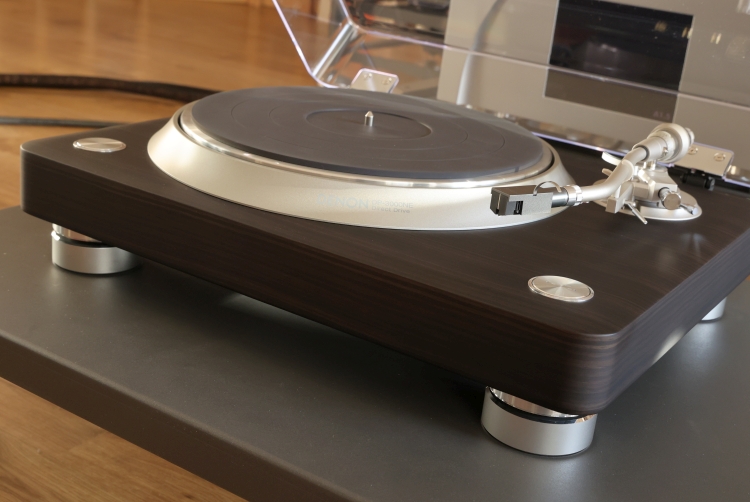
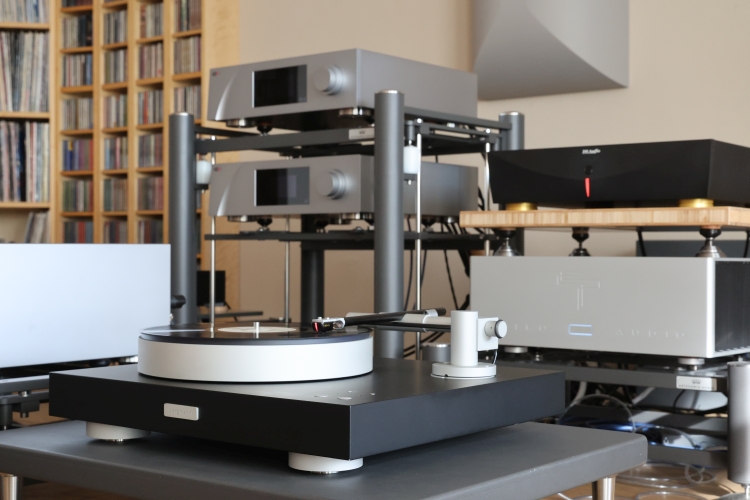
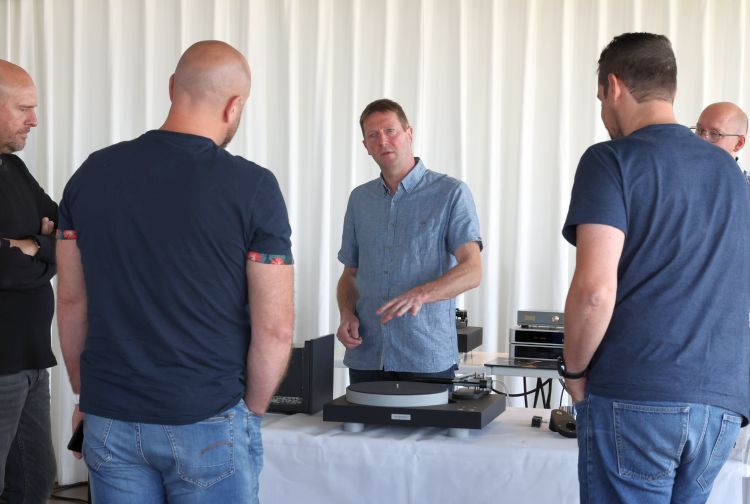
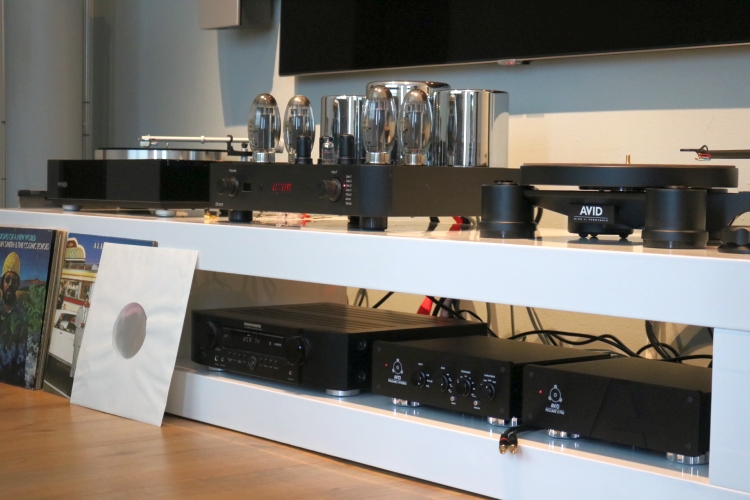
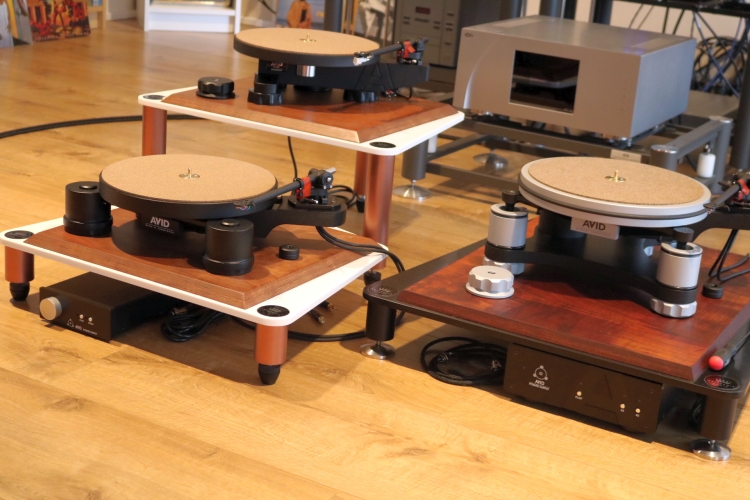
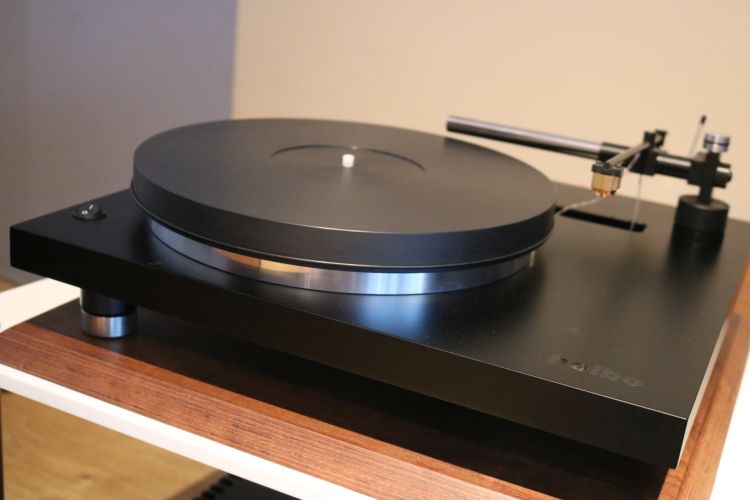
Thank you for such an informative review. However I would like to point out that the 3 point suspension with coupled sub-chassis, platter and tonearm with board was invented by H.H. Scott in 1955 with the model 710. It did not use a belt but rather a shaft drive.
Then in 1958 there was the Stromberg Carlson Perfectempo that was belt driven via variable speed cone drive to the belt pulley. It was invented by Raymond C. Siebert. This was followed in 1959 by the Australian made belt driven Orpheus Silex with a 3 point sub-chassis. However instead of springs it used dampers.
Thanks for the additional info, John. I have now slightly modified the article to make it more accurate.
Dear Christiaan,
I read your test of the new Thorens TD1601 with great interest. Do you have any idea if the Audiotechnica AT33PTG/II or AT33SA would be even better than the AT33EV you tested? Forty years ago, I had a Thorens TD115 with an
Audiotechnica AT32E, my first moving coil, and loved it!
Thanks!
Hi Günther, spec-wise, the AT33PTG/II or AT33SA should also work equally well with the TD1600/TD1601’s TP-90 arm. Of the two, I would personally be interested to try the Shibata version. One thing to keep in mind is that the TD1600/TD1601 are neutral and very lively and both the AT33EV and Denon DL-304 are relatively sweet and even a little romantic. Thus, depending on the rest of the system and unless one is looking for the tightest, cleanest, most articulate sound, sticking with a cart that is slightly on the warm side of neutral might yield the best balance.
Technically, both the PTG and the SA will be better than the EV because the latter has a simple elliptical stylus. But then, there’s also the very relative matter of musicality:-) The EV sure is sweet and smooth as well as powerful and although I have not yet heard the others, chances are that the PTG is more precise but also relatively drier. That said, since I buy a lot of second hand vinyl, I do prefer accurate tracking over a more forgiving sound. The 33SA is interesting because it has a Shibata stylus which, based on experience that I have gotten so far, seems to fall neatly in-between an Elliptical stylus and a fine line or micro line stylus. I certainly plan on trying more cartridges in the TD1601 but at the moment I have not yet planned this.
Thanks, Christiaan!
After reading your review of the Origin Live Calypso with the illustrious tonearm, I decided to follow that route and I’m very pleased. Following Mark Baker’s advice I got a Soundsmith Zephyr moving iron cartridge to connect to my Devialet 200 amp and it sounds fantastic! Thanks for enlightening reviews with products that are not mainstream but always outstanding (that includes power products by GigaWatt, which I have been using for over a year now, long before I read about them in your website.
I was wondering what anti skating settings was used? I have the same combo (at 33ev) and my settings are almost at max. which bothers me a bit. From the pictures in the story I can see a default setting.
Some pics may not show the latest state of affairs. I used it with a guesstimated setting between the second and third indentation from the right. Unlike with the Origin Live (and ViRA Aidas Rainbow cart), I’ve not yet come across blatantly bad-sounding records that necessitated a closer look at the precise anti-skating level. However, my own sample came without a cart and the At150mlx that I have been using so far is just not ideal to begin with. I recently ordered an AT33 sa that I will mount in the 1601 and will also soon dive into the Analog Magik software and this will no doubt lead to my having a closer look at the anti-skating setting.
Thanks for the comment. I am curious about your findings. Please let me know.
Hi Steven, when I get the new cartridge, I will post a review of it in which I will relay my findings with respect to the 1601 and its parameters.
Mooie en uitgebreide review ik zou graag een nieuwe platenspeler willen kopen maar kom er niet uit mijn shortlist zijn er 2. de td1601 en een Linn lp12. De linn kan uitgevoerd worden met een nieuw loopwerk walnoot Fluted plint, karousel, kore, Lingo 3 en akito of ittok arm. Het verschil is ongeveer een 2k. Is het dit waard, zijn er ook genoeg servicepunten in Nederland voor zowel Thorens als Linn. Ik kom er zelf niet uit…. En ben niet in de mogelijkheid om ze allebei naast elkaar te luisteren. Alvast dankjewel!
Hi Henri, it’s impossible for me to advise you on this as it is very much a personal matter. For me, based on the comparisons that I did so far, the Thorens sounds more to my liking. Cost/performance, the Thorens also has the upper hand. But the Linn’s sound ties in very heavily with the arm that is used, so my impressions so far are relative and not at all conclusive. I believe that the Linn’s basic platform is great but maybe the product has been hyped a little bit too much. In any event, I’m not a big fan of all the Linn upgrades, while they certainly improve various technical aspects, I’m not convinced that they are essential in getting the player to sound emotional and musically pleasing. Even with all the upgrades in place, when paired with a sub-par arm, the end result is still sub-par. Thus, I would always favor a better arm versus upgrading other parts.
Finally, you could also consider the TD1600 which is the very same turntable as the TD1601 but minus the arm motor and the auto cut-off. Omitting these features makes it cheaper, faster to operate (manual arm lift), and likely more reliable.
Hi Christiaan,
Thank you very much for your answer. In your review of the TD1601 it was just a plus to avoid the wobble of the platter with the button, and I would say I like this plus. But I also read that some people have trouble with the armlift, it stops before the end of the record. I saw a youtube instrcustion how to fix this but nevertheless. Leaning more to the TD1601 because of your review and also tuntable comparison in another review from you!
Hi Henri, Nice to hear my reviews are helpful:-) Indeed, avoiding the wobble was my main motivator for choosing the 1601 over the 1600 but I later also found that the auto-stop optical system required some tweaking. This was easy to do but if you’re not technically inclined and don’t like opening equipment, and also want total control over the arm movement, then I can see the benefit of the manual arm.
Hi
I own and used the Thorens TD1600 now for a few months and I am very pleased with it. Besides the very good looks (black high gloss) it sounds in my set very good. I use a Primare i15 amplifier and a R15 phono stage. Spendor A1 speakers and Ricable cables. An AT 0C9XML mc cartridge installed. And that is the only downside of this, I installed it and configured it myself. To difficult to do this properly. I think I could get more of it. So buy yours at a shop where a skilled person can do this for you. Other thing is support by Thorens. Not very helpful. I asked questions about the anti skate working but they could not help me. Go to your dealer they said. Last words. Next time I will buy a MM cart. Good MM carts these days match the quality of much more expensive MC carts. At least that’s what I am hearing from experts.
These days, MM carts can be found with the same exotic stylus shapes as MC carts, that is true. Jico, for instance, has fantastic replacement stylii for many MM cartridges. Also, the quality could be said to be comparable, as long as you buy in the same price bracket. However, besides hypothetically better or worse, MC and MM usually lead to very different results and this also ties in deeply with the arm and phono stage. It’s too deep a rabbit hole to get into here but all the variables mean that you may obtain better results (either objectively or subjectively) with one or the other.
Hi Christiaan,
Totaly agree with you, for such an amount of money I will Buy at a dealer who can give proper support. Curious of course which MM cart you Will buy next time….
Thx!
Hi Henri, Me too:-) For now, I am more into MC carts. But if and when I do find a really nice MM cart, I will definitely make a review.
Have you heard about the new Thorens 1600/1601 new tonearm TP 160? Sounds delicious and would be curious how it compares to the TP-92. The TP-180 tonearm looks better too.
As a matter of fact, I will soon review that combination, but alas, for Dutch printed magazine HVT, not here on HFA. But I do look forward to hearing it and comparing it to the TD-1601 with TP-92 arm.
Hope you might review the Thorens TD-1500. Fully manual like the TD-1600, but the Thorens website states the tonearm is modeled after the arm in the top of the line TD-124DD, minus any cueing of course.
I do have the TP160 installed on my Thorens TD1600. And boy what a difference with the TP92. Much much better sound. Depth and detail are much more present. And… anti skating works as expected!! (See my older note) With my AT cart just below 1 on the low site but it sounds marvellous. Thorens Germany replaced the tone arm for me.